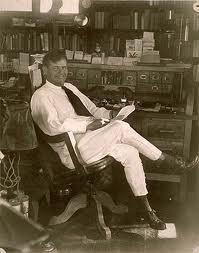The KVMLBC met for the last time in 2011 yesterday. Our book for this month was Vonnegut’s final published work, A Man Without a Country, a collection of essays published in 2005.

When I was put on the spot during our meeting and asked, “Well, Jay, what did you think?” I replied, perhaps unfairly, with something like, “Well, it was another nearly lethal dose of pessimism.” But it IS full of pessimism. Vonnegut himself admits that late in life, one is less and less able to fend off the despair of life with humor, citing Mark Twain as an example and at one point saying that “Twain and Einstein gave up on the human race at the end of their lives.” I hope I don’t end up like this.
In spite of all the pessimism, however, the book is also thankfully sprinkled with little anecdotal pockets of uplifting moments. I enjoyed for example, reading about Vonnegut’s trips to the post office and how much he enjoyed meeting and talking to others waiting in line. And how he was “in love” with the cashier:
“I am secretly in love with the woman behind the counter. She doesn’t know it. My wife knows it. I am not about to do anything about it. She is so nice. All I have ever seen of her is from the waist up because she is always behind the counter. but every day she will do something with herself above the waist to cheer us all up. Sometimes her hair will be all frizzy. Sometimes she will have it ironed flat. One day she wore black lipstick. This is all so exciting and generous of her, just to cheer us up, people from all over the world.”
I wonder if this woman ever read this book or knows she has been made famous in a small way. This also reminded me a little of the scene in his book, Jailbird, where a man walks into a coffee shop and finds kind of an oasis of gentle, comforting humanity. I’ve written about this before .
Another section I really liked was when Vonnegut compared his two uncles. One uncle (Dan) seemed to be just the kind of blowhard that he despises. He relates a scene that took place after the author had returned from World War II, and Uncle Dan kind of slaps him in the back and proclaims, “Well, you’re a man now!” (“So I killed him.” Vonnegut jokes)
By contrast, there is his “good uncle” Alex, whose principal complaint about his fellow human beings was that they “so seldom noticed it when they were happy.” He goes on to relate how Uncle Alex would occasionally, such as when the family was all sitting around sipping lemonade on a beautiful day, interrupt the others and say, “If this isn’t nice, I don’t know what is!” Vonnegut continues by telling us that he has taken up the banner of his uncle and makes sure he says this occasionally too, as do his children and grandchildren. He urges us to do the same.
I suppose if I were a witty fellow I would have said those words sometime during our club’s meeting last thursday. If those monthly meetings aren’t nice, I don’t know what is. They are almost invariably a struggle for me to get to, as they are held in the middle of the day on a weekday I have to tear myself away from work – and whatever the “crisis du jour” is that always seems to be going on – for a few hours (commute downtown time, meeting time, grab a bite to eat time – it adds up), but they always end up being kind of an oasis of thoughtful reflection, discussion, and culture in the midst of my daily version of the rat race. The meetings always seem to end far too soon, and I hate having to return to work afterward.
I should mention, too, that at this meeting there was displayed a show-and-tell item as a kind of centerpiece to our circled tables. It seems Bill, the library’s historian had seen for sale on eBay a trophy from a 1938 skeet-shooting championship in Indianapolis sponsored by none other than Vonnegut Hardware. He watched the lonely item gathering a bid-less dust on the eBay site and as its time was expiring, contacted the seller and asked if – in the case of no bids being received – they would be interested in donating it to the library. They were, and Bill picked it up on the way to the meeting. Somewhat humorously, I got the impression that he wasn’t fully appreciative of the scale of the item, which turned out to be “the size of a small man” (okay, I’m exaggerating, but not by much). So, it presided over our discussion with a towering presence…
(Below: the Kurt Vonnegut Memorial Library in downtown Bibliophilopolis Indianapolis)

Also, this month I’m going to append below the fold the “official” unofficial summary of our meeting, which one of our members (Dave) has been diligently creating for us in recent months. It provides more detail of what was discussed than my personal impressions above and might give the reader a deeper impression of what our club is like.
MEETING OF THE KURT VONNEGUT BOOK CLUB, DECEMBER 15, 2011
The Indianapolis regiment of the KV Book Club met on 12/15/11. The alleged agenda was the discussion of KV’s collection of essays “A Man Without A Country” published in 2005. Many of the articles appeared previously in the left-wing rag “In Our Times”. Read the rest of this entry »
39.771439
-86.163716













